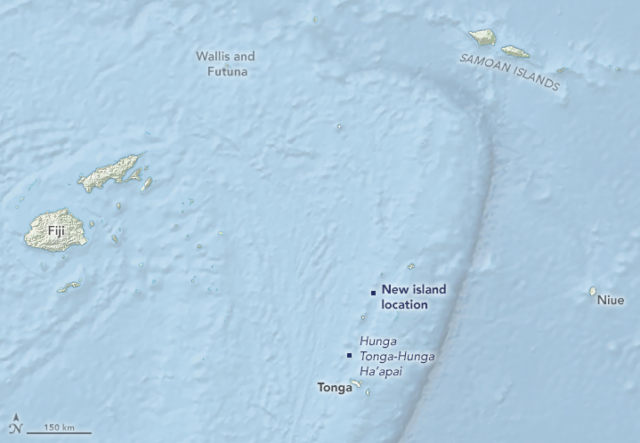The Hunga Tonga-Hunga Ha’apai eruption reached an explosive crescendo on Jan. 15, 2022. It’s rapid release of energy powered an ocean tsunami that caused damage as far away as the U.S. West Coast, but it also generated pressure waves in the atmosphere that quickly spread around the world.
The atmospheric wave pattern close to the eruption was quite complicated, but thousands of miles away it appeared as an isolated wave front traveling horizontally at over 650 miles an hour as it spread outward.
NASA’s James Garvin, chief scientist at the Goddard Space Flight Center, told NPR the space agency estimated the blast was around 10 megatons of TNT equivalent, about 500 times as powerful as the bomb dropped on Hiroshima, Japan, during World Word II. From satellites watching with infrared sensors above, the wave looked like a ripple produced by dropping a stone in a pond.
The volcanic eruption was the largest recorded in thirty years. A huge, 20 km high mushroom cloud of smoke and ash was followed by a tsunami, and the eruption was heard as far away as Australia and New Zealand, causing tsunami warnings across the Pacific. Waves as high as 1.2 metres hit the capital, Nuku’alofa, whose inhabitants fled to high ground, leaving behind flooded houses, whilst rocks and ash rained from the sky.
The WHO reports that the Tongan Government reacted quickly to the crisis, deploying a warship to the Ha’api islands, with a team from the WHO-trained Tonga Emergency Medical Assistance Team on board, ready to help the injured. The Government is advising the Tongan population to stay inside, wear masks if they have to go outside, and drink bottled water to avoid health risks arising from the fallen ash.
Will the underwater volcanic eruption that occurred in Tonga in the southern Pacific Ocean January 15, 2022, affect global climate?
However, experts pointed said it was still too early to draw conclusions as new data would emerge. Also, more eruptions were possible, they added. The Tonga event follows the Intergovernmental Panel on Climate Change report of 2021, which had suggested that an explosive volcanic eruption could occur in the 21st century.
This eruption could lower surface temperature and precipitation globally, especially over land, for one to three years. “If such an eruption occurs, it would therefore temporarily and partially mask human-caused climate change,” the report had added. SO2 reacts with water to form sulphuric acid droplets, which become a part of aerosol particles. Aerosols are tiny liquid droplets suspended in the air.
The Tonga volcanic event of January 15 was violent, triggering a tsunami in Tonga, Fiji and Samoa. Shockwaves were recorded thousands of kilometres away, reaching as far as New Zealand about 2,000 km away. No casualties have been recorded so far. The eruption damaged an undersea cable, severing the communication network. Australia and New Zealand sent flights on January 17 to assess damage in Tonga.





